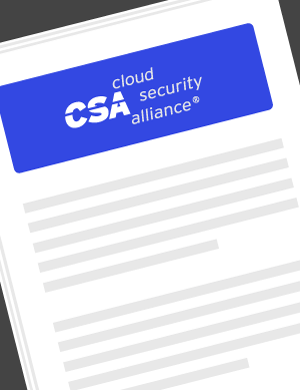Download Publication

Who it's for:
- CISOs, business leaders, and investors
- AI researchers, engineers, and developers
- Policymakers and regulators
- Customers
- The general public
AI Organizational Responsibilities - Governance, Risk Management, Compliance and Cultural Aspects
Release Date: 10/21/2024
Continuing CSA's efforts to address the evolving AI landscape, this latest publication covers AI governance, risk management, and culture. Understand various roles and their responsibilities in AI strategy, compliance, technical security, and operations. Find comprehensive best practices that are a must-read for CISOs, AI developers, business leaders, and many others.
This publication steers organizations toward responsible and secure development and deployment of AI. Learn about AI security policies, audit processes, and legislation like the EU AI Act and US AI Executive Order. Delve into strategies for managing risk, developing a strong safety culture, managing inventory, controlling access, and monitoring activities.
For every responsibility listed, understand its evaluation criteria, responsibility matrix, implementation strategies, continuous monitoring and reporting mechanisms, access controls, and applicable regulations. Ensure that your organization can successfully assess, implement, and manage AI initiatives.
This guidance was a collaborative effort by the AI Organizational Responsibilities Working Group and builds on their foundational guidance.
Key Takeaways:
- The potential job roles within AI governance, technical support, development, and strategic management
- AI risk management strategies, including threat modeling, risk assessments, attack simulations, incident response planning, and data drift surveillance
- How to establish and maintain a robust AI governance structure while ensuring adherence to relevant regulations and standards
- How to build a robust AI safety culture and implement effective training programs
- Strategies for identifying, managing, and preventing shadow AI
Download this Resource
Interested in helping develop research with CSA?
Related Certificates & Training
.png)
Learn the core concepts, best practices and recommendation for securing an organization on the cloud regardless of the provider or platform. Covering all 14 domains from the CSA Security Guidance v4, recommendations from ENISA, and the Cloud Controls Matrix, you will come away understanding how to leverage information from CSA's vendor-neutral research to keep data secure on the cloud.
Learn more
Learn more




.jpeg)
.jpeg)

.jpeg)
